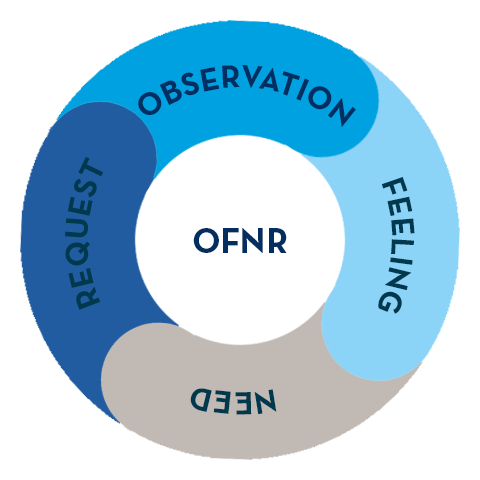Learn How to Approach Difficult Conversations
Learning Objectives
After completing this unit, you’ll be able to:
- Identify best practices and tactics for handling difficult conversations.
- Explain the framework for tackling difficult conversations.
Defining Difficult Conversations
Difficult conversations are those in which a person or party has wants, needs, opinions, or perceptions involving feelings or emotions. These happen every day—in life and in business. And although you can feel anxious about having difficult conversations, particularly with customers, they tend to have positive results, offering clear next steps and a path forward.
Discussing topics like cost savings, time, and resources with customers can be stress-inducing for you, and for them. Perhaps you feel uncomfortable having such conversations since the stakes are high: You know your product or service drives the success of their business. And you want to preserve that. Approach these topics holistically to show empathy, respect, transparency, shared responsibility, care, and trust with your customer.
Prepare for the Expected and the Unexpected
If you anticipate a difficult customer conversation, you can prepare—gather facts, tailor your message and delivery, and come up with solutions ahead of time.
Perhaps you can also anticipate the customer’s reaction. It’s important to acknowledge the reason for those reactions. Your conversation might have information that impacts their cost savings projections for the year or a personal stake such as an executive missing a goal.
And keep in mind what’s at stake for the customer. This helps you focus on how to deliver difficult news and your solutions.

But sometimes, difficult conversations are spontaneous and can’t be planned for. An issue may not seem like a big deal going in, but you discover that it is for the customer or company.
This can happen when a customer is unhappy about something that is out of your control. For example, say a customer is still building a relationship with you. You can anticipate that they had an established rapport with their last point of contact and worry they won’t get the same care and attention from you. Or there can be an additional trigger you’re unaware of. Maybe they recently ran into a colleague who seems happier after switching to a competitor.
These situations can lead to difficult conversations. And they can be harder for you to navigate because you didn’t get the chance to prepare, anticipate, or brainstorm solutions. Remember to think calmly and holistically when talking to the customer.
Remind yourself that it isn’t personal, rather the customer perceives a stake is in jeopardy. You may not always know why or what leads to those feelings at that moment, but you can take control and redirect the conversation by using the OFNR questions.

- Observation: What is the conflict? What stake is at jeopardy?
- Feeling: How did or do they feel about the focus of the conversation?
- Need: What does the customer need?
- Request: What is it they are asking?
The OFNR set of questions is a great start to understanding the issue. To further steer the conversation in a productive direction, use these best practices.
Manage emotions: Focus on the customer and their body language, and not your personal feelings or emotions. Emotions show through body language and tone too. Whether in person, virtually, or on the phone, listen and look for any cues that indicate the customer is telling you something beyond the words they’re using. Be aware that you’re sending a message to the customer even if you’re not speaking—and they’re sending one back.
Give acknowledgement: Allow the customer to talk, practice active listening, and paraphrase with empathy. Once the customer is done talking, ask permission to speak to show respect: “May I say something?” Acknowledge their emotions. “I see you’re angry about this situation. I can tell it’s causing you a lot of stress or anxiety.”
Be transparent: If you misstep, take responsibility. Stick to the facts, and avoid power struggles over who is “right.” If something has impeded your customer’s success, take responsibility. When they succeed, you succeed. Perhaps a misstep occurred that didn’t involve you specifically. Your apology can acknowledge their frustration and take responsibility for the team, as in, “I’m sorry that this (situation, person, or event) made you feel this way. What can we do to ensure that this doesn’t happen again?”
Be solution-focused: Provide the right recommendation—one that helps move the customer toward success, is delivered at the right time, and is formulated with the customer’s help. Sometimes solution-focused folks want to start solving the problem before stepping back and doing research. It’s important to step away, allow the air to calm, and research options. If there isn’t a clear path forward, let the customer know you’ll research options and follow up. Not following up is one of the easiest ways to break trust.
Adopt a mindset of inquiry: After you’ve acknowledged the customer and taken the necessary responsibility, it’s time to ask questions, so you can get a clear view of the issue. This shows the customer you care as you dig for the root cause. Some suggested questions:
- When did you start feeling this way?
- What do you think should have happened?
- Help me understand how to help. What is the best path forward in your opinion?
- What outcome would you like to see?
The more information you gather, the better you can brainstorm solutions with your team.
Now that you know the OFNR approach and a few best practices, let’s move on to the next unit to learn more about how to prepare for difficult conversations.